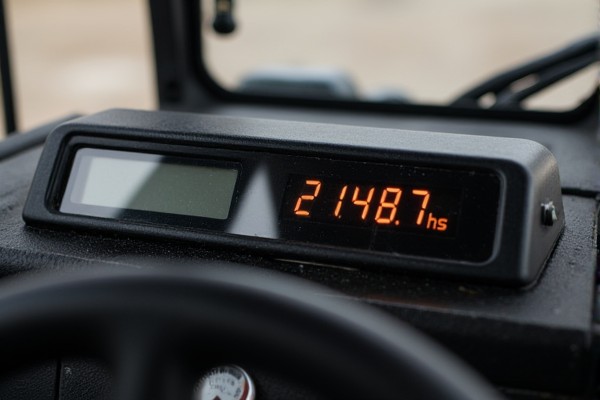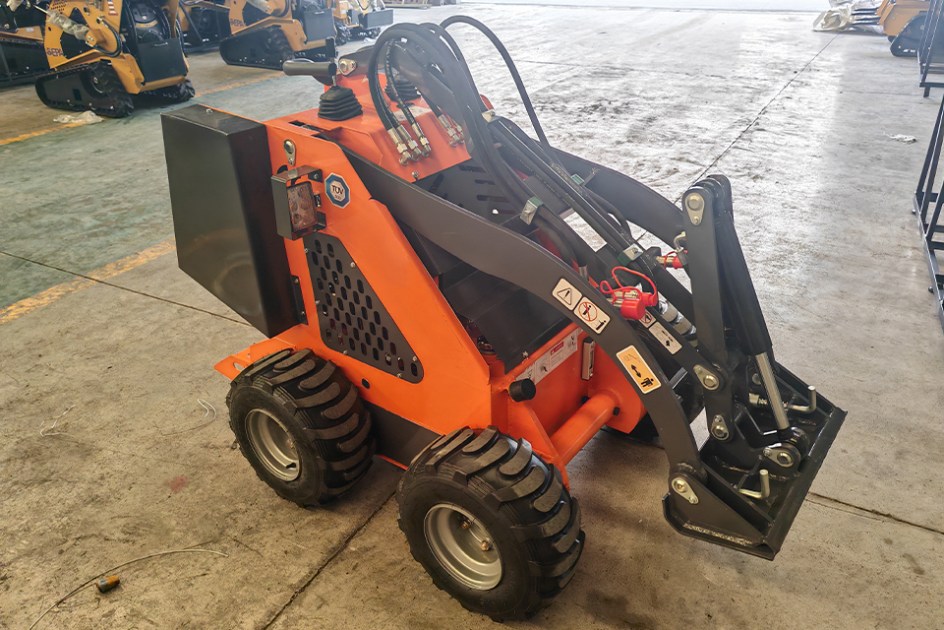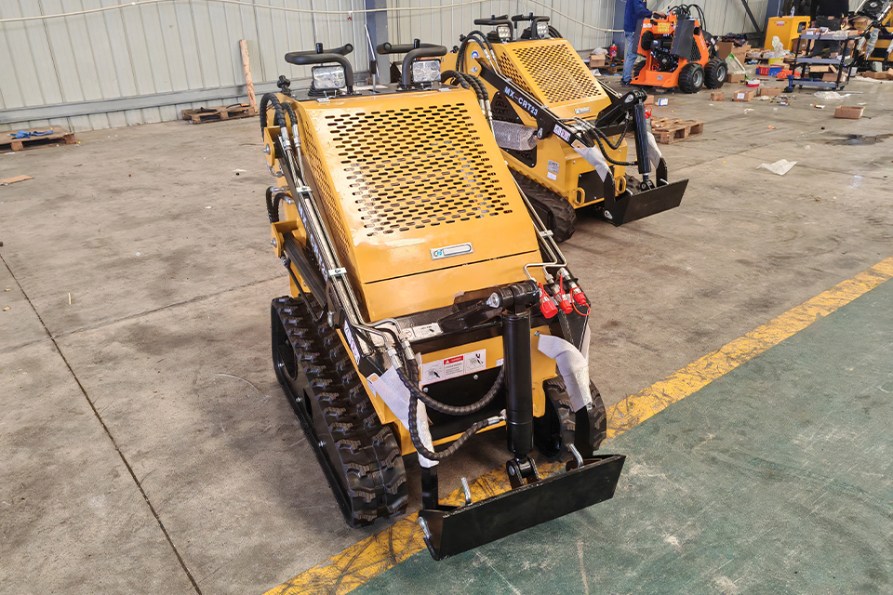[
Ever shopped for mini skid steer attachments on Amazon and felt completely overwhelmed? You're not alone. I've been there - staring at endless options, wondering which ones are worth your hard-earned money and which will break after just a couple of jobs.
I remember early in my equipment rental days, I bought a bargain-bin grapple attachment online. It looked decent, saved me a few hundred bucks upfront... and then promptly failed on a customer's job site within a week. Talk about embarrassing! Not only did my customer lose precious time, but my rental company's reputation took a hit – all because I tried to cut corners.
That costly mistake, and countless others learned over 20 years spanning the factory floor, sales calls, and owning my own manufacturing and rental businesses, taught me exactly what separates a worthwhile tool from expensive scrap metal. Let me share those hard-won lessons so you can avoid the same pitfalls when browsing platforms like Amazon.
Finding quality gear online requires looking far beyond just the price tag or star rating. It's about understanding what makes an attachment suitable for your machine and your work. Focus on build quality, verified compatibility (especially hydraulics!), clear warranties, and reviews that speak to durability for your specific tasks.
Here’s a breakdown of common attachment types and what my experience taught me to look for in Amazon listings:
1. Heavy-Duty Buckets (Standard, Tooth, 4-in-1)
- What My Experience Says to Look For: Check descriptions for steel thickness (e.g., 1/4" sides, 3/8" or 1/2" cutting edge) – thicker usually means longer life, especially for the cutting edge. Look for reinforcement plates (bottom runners add significant rigidity). From my time overseeing production lines, I can tell you a good weld isn't just neat-looking; it needs deep penetration into the steel. Look closely at product photos – grainy pictures or ones avoiding weld close-ups can sometimes hide poor workmanship. Tooth buckets should specify replaceable teeth (brands matter here). For 4-in-1 buckets, robust hydraulic cylinders and well-gusseted pivot points are non-negotiable for longevity.
- Brands Often Offering Value on Amazon: Titan Attachments frequently offers various bucket types with generally positive reviews regarding value for money. Blue Diamond also appears, often positioned as a slightly higher quality/durability tier. Always evaluate based on specs and reviews, not just brand.
- Amazon Check: Read reviews specifically mentioning build quality, weld integrity, and longevity in applications similar to yours. Look for Q&A confirming fitment on machines like yours. Verify the listed weight – ensure your machine can handle it plus a full load comfortably.
- Price Range (Typical on Amazon): $400 - $900 (Standard/Tooth), $1200 - $2500+ (4-in-1)
2. Versatile Pallet Forks
- What My Experience Says to Look For: Focus first on the load capacity rating – it absolutely must exceed your machine's lift capacity for safety. Adjustable fork width is standard, but look for forged tines – they are significantly stronger and more resistant to bending than welded ones. Check the frame construction for solid welds and reinforcement. Easy-to-use locking mechanisms for fork positioning save hassle on the job.
- Brands Often Offering Value on Amazon: Titan Attachments is very common, offering various capacities. Many other brands compete heavily here; focus on capacity, tine type (forged!), and frame build quality revealed in reviews and photos.
- Amazon Check: Check reviews for comments on tine strength (bending issues are a red flag), frame durability, and ease of adjustment/locking. Verify the mounting plate compatibility (most use the mini skid steer standard, but double-check).
- Price Range (Typical on Amazon): $400 - $800
3. Reliable Auger Drives & Bits
- What My Experience Says to Look For: This is ALL about hydraulics. The drive head must match your machine's GPM (Gallons Per Minute – think volume or flow rate of hydraulic oil) and PSI (Pounds per Square Inch – the pressure). The attachment needs the right amount of both to work effectively. Listings must specify the required flow range (e.g., 6-15 GPM). As a salesperson and later a manufacturer, the most common attachment frustration I saw was customers buying powerful-looking augers for underpowered machines. It's like putting regular fuel in a race car – it simply won't perform as intended, no matter how well-built the auger is. Look for planetary gear drives (more durable than chain drives) and check if quality hoses/couplers are included (or factor in that extra cost). Bits should ideally have replaceable teeth/pilot points.
- Brands Often Offering Value on Amazon: Titan Attachments, Blue Diamond, and various specialized sellers offer auger packages. Be extra diligent checking specs here due to the hydraulic dependency.
- Amazon Check: CRITICAL: Find the GPM and PSI requirements in the description or ask the seller directly via Amazon Q&A before ordering. Reviews mentioning specific machine pairings (e.g., "worked great on my Dingo TX 1000 with 12 GPM flow") are incredibly valuable. Ensure the output shaft size matches the bits you have or plan to buy.
- Price Range (Typical on Amazon): $900 - $2000+ (Drive Head), $150 - $500+ (Bits, depending on size/type)
4. Useful Grapples (Root, Rock, Tine)
- What My Experience Says to Look For: Steel thickness matters everywhere, especially the tine tips and main frame. Independent grapple arms offer more versatility for clamping uneven loads like brush or logs. Cylinder protection (shields or smart placement) is crucial. Running a rental fleet taught me that grapples take incredible abuse. The ones that lasted weren't necessarily the fanciest, but they had shielded or well-placed cylinders and greaseable pivot points. We learned quickly that spending a bit more upfront on robust construction saved thousands in repairs and lost rental days. The grapple's weight itself is key – ensure your mini skid steer can lift it plus a typical load.
- Brands Often Offering Value on Amazon: Titan Attachments offers various grapple types. Blue Diamond is also common, often featuring heavier-duty construction. Again, compare specs and user feedback relevant to your tasks.
- Amazon Check: Read reviews focusing on hydraulic cylinder leaks (a common failure point on cheaper models), tine bending, frame cracking, and overall durability in heavy use. Check the required hydraulic connections (often 2 sets of couplers). Confirm the weight and ensure your machine has adequate lift capacity remaining after lifting the grapple itself.
- Price Range (Typical on Amazon): $1000 - $2500+
General Amazon Buying Tip: Don't just trust the title "Universal Mini Skid Steer Attachment." Dig into the description, specs, photos (zoom in!), reviews, and Q&A. Reputable sellers on Amazon will usually answer compatibility questions quickly if you provide your machine's make and model. It's worth the extra step.
The Compatibility Minefield: Will It Really Fit Your Machine?
You've found what looks like the perfect attachment online, but a nagging question remains: will it actually connect and work on your specific mini skid steer? This is one of the biggest headaches I've watched customers (and myself!) struggle with when buying online.
The short answer: Mini skid steer attachments are NOT completely universal. While many use standard quick-attach mounting plates, critical differences in hydraulic coupling types, flow requirements, and even minor mount variations exist between brands and models.
The term "universal" usually just refers to the mounting plate style. After managing a rental fleet with multiple brands for 15 years, I can definitively say true compatibility goes much deeper.
Mounting Systems vs. Hydraulics
The industry has several common mounting plate styles:
- Mini Universal/Standard: Most common for mini skid steers (Toro, Vermeer, Ditch Witch often use variations of this).
- Bob-Tach: Bobcat's specific system (different from the mini universal).
- Full-Size Universal: Used on larger skid steers – will not fit minis.
- Adapters exist, but they add weight, complexity, shift the load center, and create another potential failure point. Direct compatibility is always best.
But the REAL challenge is often Hydraulics: I once had a customer thrilled with a Titan Attachments 4-in-1 bucket he ordered from Amazon. His machine had plenty of hydraulic power (GPM/PSI), but it used a different style of hydraulic quick coupler. We spent an extra $150 and half a day sourcing adapters before he could use his new $2000 bucket – frustration and cost that simple pre-checking could have avoided.
Brand-Specific Quirks & Seller Claims
Each manufacturer can have unique characteristics:
- Some brands use unique hydraulic couplers even with standard mounts.
- Certain models (especially older or very compact ones) might have lower hydraulic flow rates (GPM) limiting attachment choices.
- Mounting pin spacing or locking mechanisms can have slight variations even within the "mini universal" standard.
What Sellers Don't Always Tell You: The "universal" claim on many Amazon listings primarily means "fits the common mini quick-attach plate style." It doesn't guarantee hydraulic compatibility or fitment on every single machine. I learned this the hard way early in my rental days when I snagged what seemed like a great deal on pallet forks "guaranteed" to be universal. Turns out, they used a slightly different pin spacing, rendering them useless for half my fleet until we modified them – a frustrating and costly oversight.
Based on managing a mixed fleet and dealing with these headaches, brands like Titan and Blue Diamond often provide decent compatibility with standard mini skid mounts for the price, but always verify for your specific machine model.
Your Pre-Purchase Checklist:
- Know your exact machine make and model.
- Confirm your machine's mounting plate style.
- Know your machine's hydraulic flow rate (GPM) and pressure (PSI).
- Check your machine's hydraulic coupling type (e.g., flat-face, poppet).
- Carefully read the attachment's required GPM/PSI and specified mounting compatibility in the Amazon listing.
- Contact the seller via Amazon Q&A with your machine details if anything is unclear.
Is a Mini Skid Steer a Good Investment?
That moment of hesitation before clicking "buy" on a major piece of equipment... I've felt that equipment-buying anxiety too! Is this a game-changing business tool or an expensive toy?
From my perspective as a former manufacturer and current business owner: Yes, a mini skid steer is often an excellent investment for contractors, landscapers, large property owners, and even ambitious DIYers, provided it matches their needs and workload. With the right attachments, these compact powerhouses can effectively replace 5-7 specialized machines, delivering significant ROI through rental savings, drastically reduced manual labor, and the ability to take on more (or bigger) jobs.
When I first added mini skid steers to my rental business, I was skeptical about their earning potential compared to dedicated machines. But tracking the numbers quickly changed my mind – they became my highest-utilized and highest-earning assets precisely because of their versatility.
The Versatility = ROI Factor
One machine that can dig, load, trench, sweep, grapple, break concrete, auger holes... that's the core value proposition.
Take Alex, one of my long-term landscaping contractor customers. He used to constantly rent individual machines – a trencher one week, a walk-behind loader the next. After analyzing his costs, he invested in a mini skid steer and a core set of attachments (bucket, forks, auger, grapple). The result? He told me he cut his monthly equipment rental bills by roughly 60% and, because he always had the right tool available, increased his job capacity and completion speed by nearly 40%. The math was undeniable.
Cost Considerations Beyond Sticker Price
When evaluating the investment:
- Purchase Price: New ($20k-$50k+), Used ($10k-$35k+).
- Attachment Costs: Budget $1,000 - $4,500+ per quality attachment.
- Operating Cost: Factor in fuel, routine maintenance, eventual track/tire replacement (typically $15-$30/hour depending on use).
- Savings: Calculate potential savings on rentals and manual labor.
- Increased Revenue: Estimate potential gains from increased efficiency and job capacity.
- Resale Value: Well-maintained machines hold value well. As someone who's manufactured these machines, I can attest that build quality significantly impacts longevity and resale value – factors that directly influence your long-term ROI. A machine built to last fetches a better price down the road.
Most contractors I've worked with find they recoup their initial investment within 12-24 months of regular use.
How Many Hours Is Too Much for a Used Mini Skid Steer?
Buying used equipment can feel like navigating a minefield – is that "low hour" machine a great deal or a ticking time bomb? One person's acceptable hours might be another's nightmare. I've bought and sold countless used machines over the years.
Generally, 2,000-3,000 hours starts being considered "high" usage for a mini skid steer. However, this is a loose guideline. Crucially, maintenance history and visible condition are far more important indicators than the hour meter alone. A meticulously maintained 4,000-hour machine from a careful owner could easily be a better buy than a neglected 1,500-hour unit that's been abused.
When I evaluate used machines for purchase or trade-in, the hour meter is just one data point. Here's what really tells the story:
What Hours Don't Tell You
Usage type dramatically impacts wear:
- Hours spent digging in rocky soil are much harder on a machine than hours moving mulch.
- Constant high-flow attachment use (like mulchers or planers) ages hydraulic components faster.
- Operating primarily in dusty conditions accelerates engine and filter wear.
A stark example from my own fleet: I once owned two identical compact loaders (Dig-boy SL50 models, in this case) bought used with similar hours (~1800). One had been primarily used by a landscaper with a bucket and forks for light material handling. The other came from a fence contractor who constantly ran an auger in dense clay. The landscaper's machine ran reliably past 5,000 hours with just standard maintenance. The fencer's machine needed major hydraulic work and engine attention before hitting 3,500 hours. Same model, similar starting hours, vastly different remaining life due to how those hours were accumulated.
Key Inspection Points (Beyond the Meter):
- Hydraulics: Check all functions for speed and strength. Look meticulously for leaks at cylinders, hoses, fittings, and drive motors. Cloudy or burnt-smelling hydraulic fluid is a bad sign.
- Undercarriage: Inspect tracks/tires for wear/damage. Check rollers for flat spots or seizing. Examine drive sprockets for worn teeth (sharp points are worn).
- Engine: Listen for knocks, excessive smoke (white, blue, black), or hard starting. Check oil and coolant levels/condition. Look for leaks.
- Controls: Test responsiveness and precision. Sloppy controls can indicate worn linkages or hydraulic issues.
- Structure: Inspect frame, boom arms, and attachment plate for cracks, bends, or unprofessional-looking weld repairs. Check pin/bushing tightness in pivot points (excessive wobble means wear).
- Maintenance Records: Ask for them! Regular oil changes, hydraulic filter replacements, and documented repairs are huge positive indicators.
Brand Longevity (General Trends from Experience):
- Premium Brands (e.g., Bobcat, Vermeer): Often engineered for heavy, daily use and can reach 5,000+ hours with excellent maintenance.
- Solid Mid-Tier (e.g., Toro, Ditch Witch): Typically provide reliable service to 3,500-4,500 hours with good care.
- Value/Entry-Level Brands: May start showing more significant wear or require major component attention around 2,000-3,000 hours, though maintenance is still the key factor.
My attachment buying strategy reflects this: I wouldn't put a brand new, premium $2,500 grapple on a budget machine showing 3,000 hard hours, nor would I bottleneck a low-hour, top-tier machine with the cheapest bucket I could find online. Match the tool quality to the machine's condition and your expectations.
Conclusion: Making Smart Choices on Amazon
Navigating the world of mini skid steer attachments on Amazon doesn't have to be overwhelming. The "best" attachment isn't just about brand or price; it's the one that's built well for your tasks, perfectly compatible with your machine's specific mounting and hydraulic system, and backed by transparent specifications and real-world user feedback.
Always prioritize:
- Verification: Double-check mounting and hydraulic compatibility (GPM, PSI, couplers) BEFORE you buy.
- Quality Clues: Look for details on steel thickness, weld quality, component protection, and forged vs. welded parts.
- User Reviews: Seek out detailed reviews mentioning specific machines and use cases similar to yours.
- Seller Communication: Don't hesitate to ask sellers specific questions about compatibility via Amazon's Q&A feature.
By applying these insights – gleaned from two decades working hands-on in manufacturing, sales, and equipment ownership – you can cut through the noise on platforms like Amazon, avoid costly mistakes, and invest wisely in tools that will genuinely enhance your productivity and serve you well for years to come. Happy hunting!








